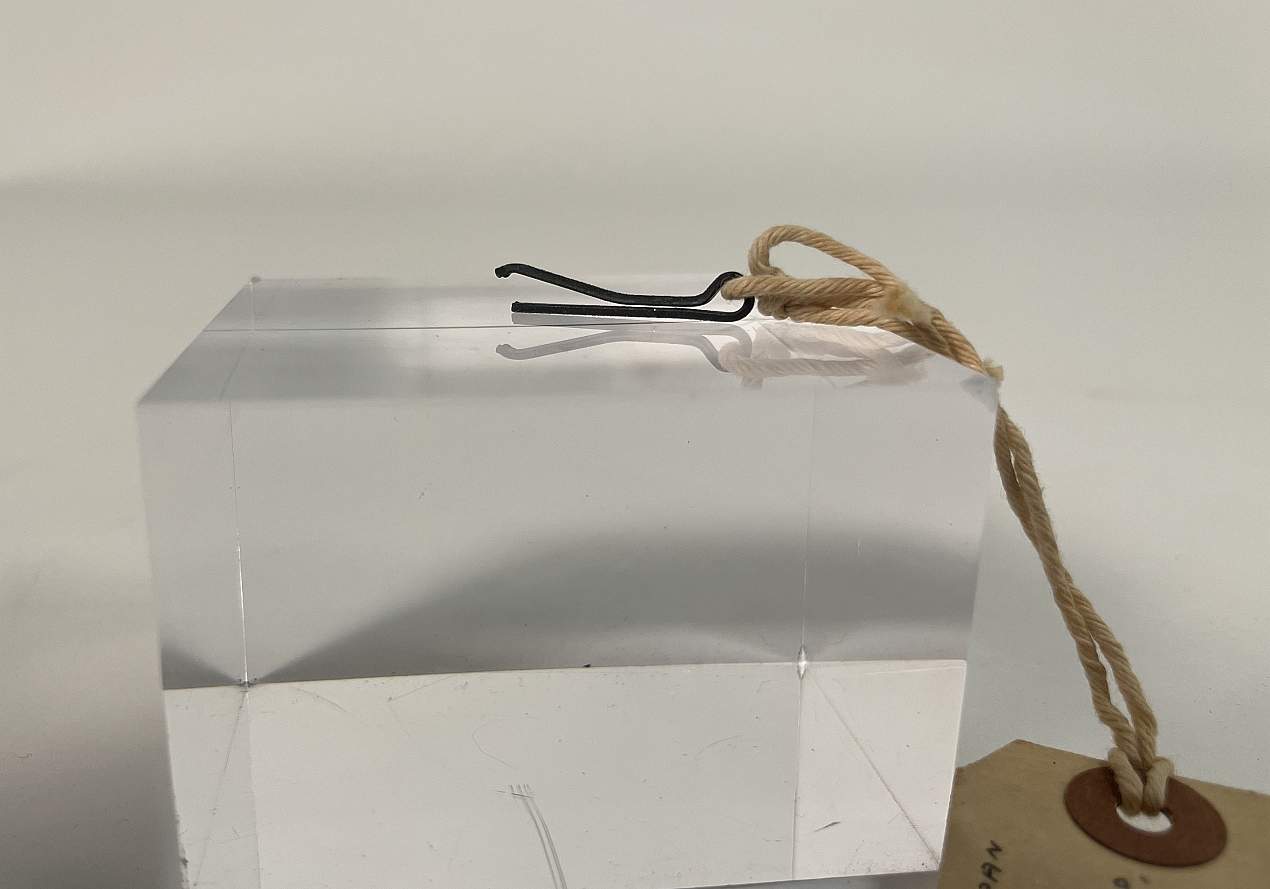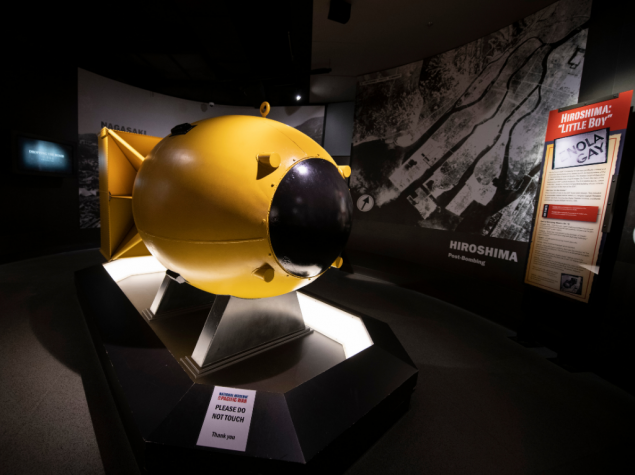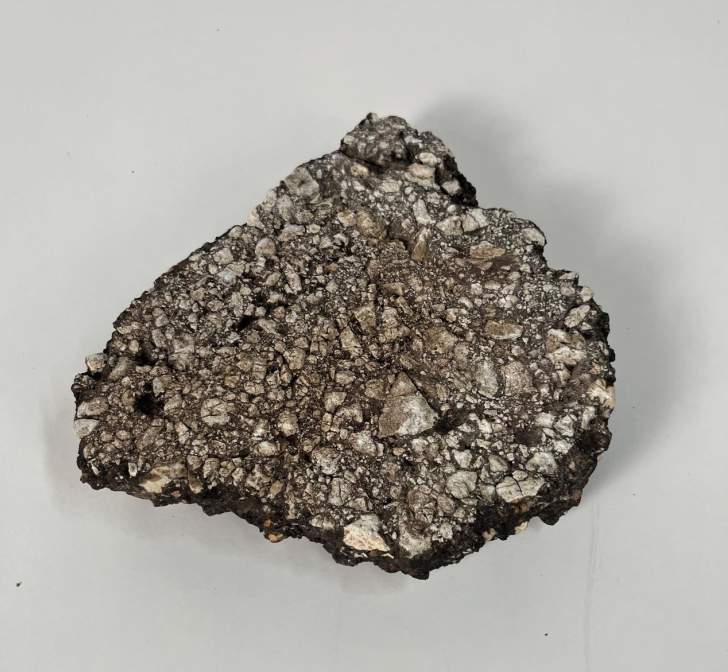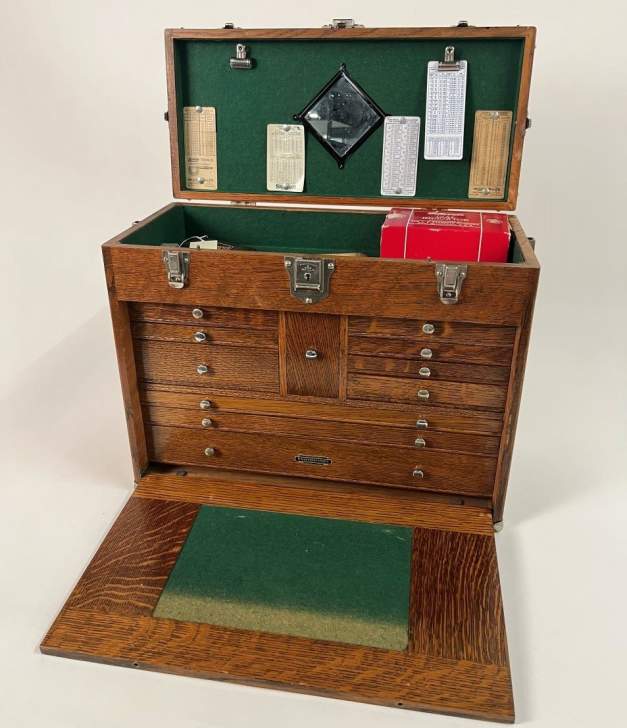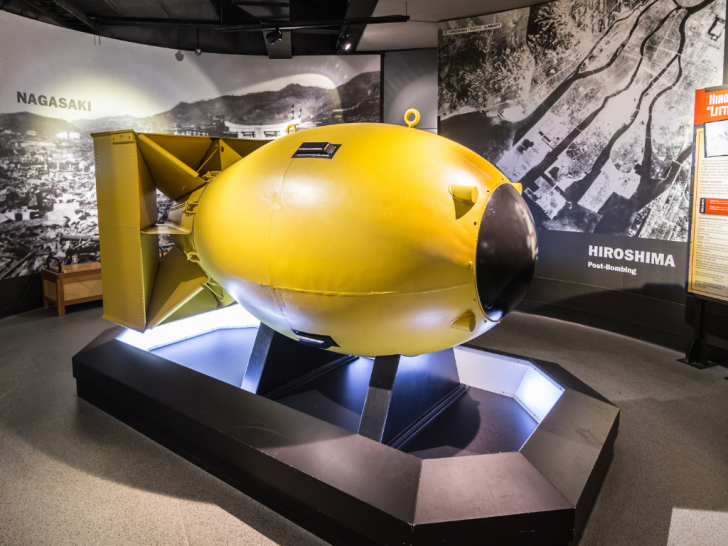Bomb Fuse Pin from a night incendiary raid on Nagoya, Japan on 17 May 1945. From the service of Barney Franklin Wotipka, who was part of the 40th Air Expeditionary Wing. Similar incendiary raids and strategic bombing missions occurred across Japan as the United States targeted Japanese war production. With many citizens turning their own homes into mini manufacturing plants, the lines between civilian and military assets became blurred. Thousands of civilians were killed in these bombing raids, adding to the heavy death toll. Still, the Japanese refused to surrender.
The Final Year: Bomb Pin
This section examines the final year of the war and the need for a swift end to the Pacific War.
Overview
The year 1945 saw the most deaths of the Pacific War. Japan’s policy of no surrender was taking a heavy toll on both sides.

Iwo Jima, 1945. From the National Archives.
Hundreds of thousands of men, both Allied and Japanese, had been wounded, killed, or went missing in the battles of Iwo Jima and Okinawa. An estimate of 150,000 civilians had also died at Okinawa. In addition to soldiers, Japanese citizens were being trained to fight in a desperate attempt to make the war as costly for the Allies as possible. The situation was becoming desperate.
The sooner the Americans come, the better… One hundred million die proudly
Japanese propaganda slogan, summer 1945
America was preparing an invasion of the Japanese home islands, Operation DOWNFALL, to begin in November of 1945. What they didn’t know was that Japan expected an invasion and began making counterplans of their own. Post-war analysis estimated the potential casualties from Operation DOWNFALL to be anywhere from 250,000 to 1 million. The stakes were high. The Allies needed a swift end to the war to prevent the heavy death toll and destruction that would occur from the invasion of Japan. With the successful test of the atomic bomb in July 1945, America found their solution.
Bomb Pin
Exhibit Preview
The Atomic Bomb Exhibit
This exhibit tells the story of the atomic bomb from the development stages to the effects of the bombings on Hiroshima and Nagasaki in August 1945....

